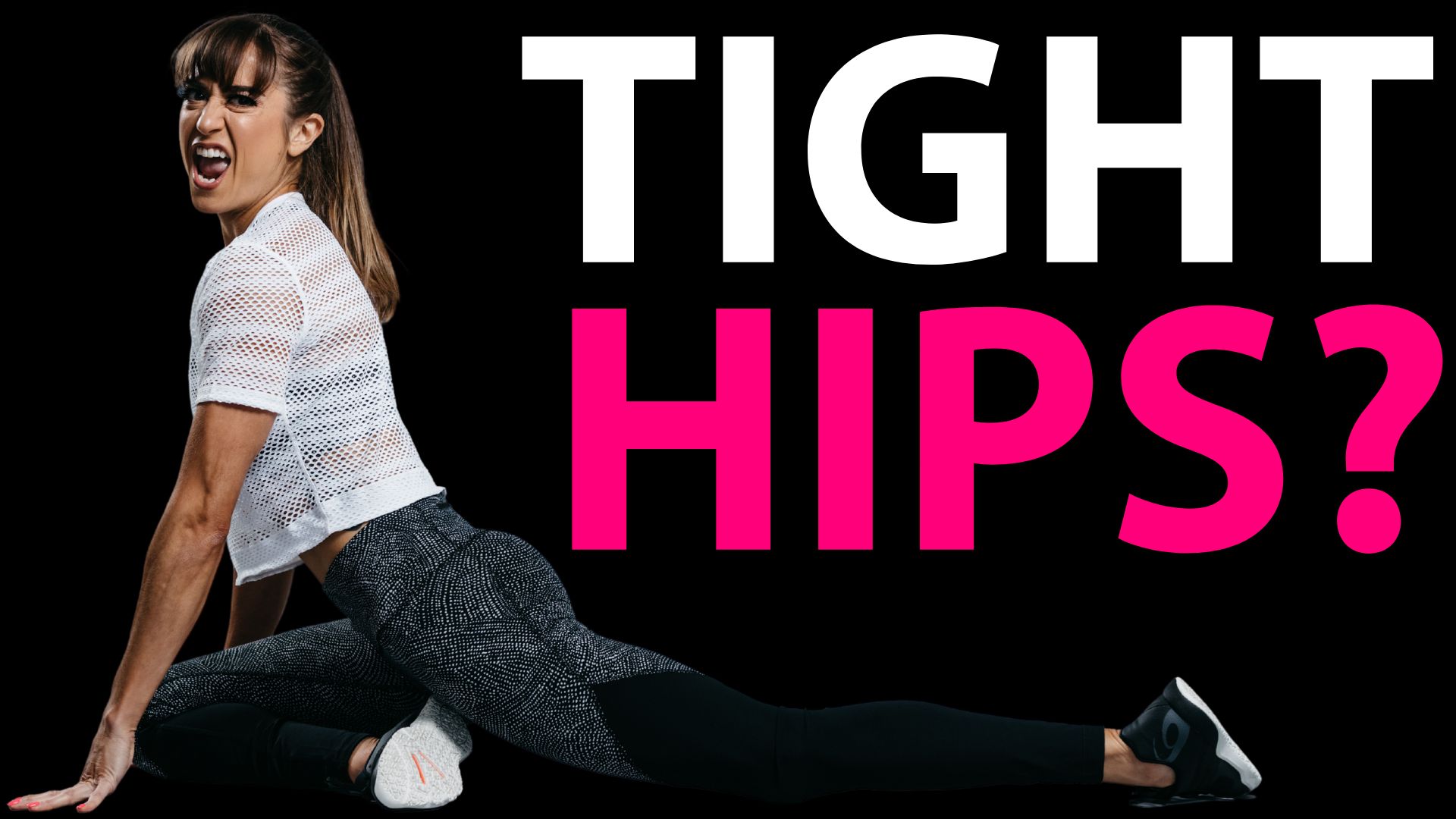If you’re frustrated not seeing your mobility and flexibility improve, it’s time to not just focus on your prehab and warm up but also how you’re truly using the moves in your workouts.
Because so often we do all of this work to try to have our joints be able to move in every direction as our muscles can stretch further…
Only to then go strengthen through a limited range of motion in our workouts.
We do half squats.
We don’t lunge all the way down.
And all this does is cause us to tighten back up because we are only strengthening muscles and building stability through a very limited range of motion.
We are training muscles to be shortened. Not to mention a huge part of what allows for greater joint mobility is a joint feeling STABLE through the range of motion.
And stability is muscles being able to power and control the full range of motion.
So if we are lifting in a way that isn’t working a joint through the range of motion we’re building, like our hips, we’re just going to end up frustrated feeling like we’re wasting time on prehab to just have our hips be constantly tight.
And increasing the range of motion you do your lifts through isn’t just going to pay off for mobility purposes….
There is amazing research showing that by putting a muscle under greater stretch with loads, we may see better muscle and strength gains faster.
That’s why one of the most important components of mobility you need to stop ignoring is your range of motion in your lifting sessions!
And this is why I want to share one of my favorite lunge variations for functional strong hips.

The bonus too of doing increased range of motion exercises like this lunge is that they will pay off in better strength gains, progressing moves without adding loads or fancy equipment.
You may even find you have to go lighter than you normally would by just adding a few more inches you’re working through!
Changing the range of motion can make exercises harder, changing postures, muscle activation and even adding instability.
It’s progression through the same but different.
Now it is key to note that a “full range of motion” will vary person to person.
This doesn’t mean you should be trying to force ass to grass squats if you can’t keep your heels down and load the movement correctly.
We will each have different builds that will impact what full movements are right for us.
It is though why you may want to check your ego at times, lower the weights and focus on instead increasing the range of motion you are working through.
It’s why you may want to swap in a single leg squat even to a lower box over your normal heavy back squat.
That focus on a unilateral move through a bigger range of motion can help you see huge improvements in your mobility and even your heavy lifts!
It’s also why performing a balance lunge or bulgarian split squat with your back foot raised can help you make the move harder while helping you better build and maintain the mobility you’re working hard for.
But if you’re going to use a tool that increases the range of motion, and often adds instability as well, you actually need to move through that now larger movement and fully control it.
Too often we do balance lunges and don’t drop our knee to the ground. We don’t use the range of motion we’ve added.
So while having our back foot up may have added instability, we aren’t really getting the full benefit. We aren’t strengthening the hip mobility and flexibility we built in our warm up.
It’s why we need to find ways to slowly increase the range of motion and work through it.
It’s why I wanted to share one of my favorite balance lunge alternatives to focus on improving hip mobility and stability – The Deficit Split Squat.
This is a very quad intensive move and often really gets you feeling that rectus femoris, or the only quad muscle that connects at both your hips and knee.
But it is a great way to take that split squat up a notch when you can complete the full range of motion from the ground.
Because moves like the split squat are basically hip stretches. Ones we just load down to strengthen muscles.
And the Deficit Split Squat is deceptively hard. So start with adding only a very small rise under your front foot.
This rise under your front foot over your back one, is a great way to work on your ankle and hip mobility in a very quad focused way.
It is also often easier for us to control and control without adding in a hip hinge.
Often with the balance lunge, we struggle to go as low and tend to include a bit more glute loading, hinging slightly at the hips.
While not bad, it does prevent us from training that hip extended position.
That’s where the Deficit Split Squat can be key.
Raising that front foot will help you focus on that back hip being extended as you sink deeper than you would if you were just lunging to the ground, putting those hip flexors under stretch.
And you’ll also find yourself loading your quads and feel that ankle mobility of your front leg being trained and tested as you keep that heel down.
You want to sink straight down not shift forward or backward.
When you stand up, you’ll also find your front leg stays slightly bent. This extra time under tension only serves to make your legs work harder.
This is why sometimes not just thinking about adding weight to moves can be so key to us seeing better results while progressing exercises to challenge ourselves.
As you can control the range of motion, you may add more of a rise or add weights. Sometimes if you can’t yet work through a slightly bigger range of motion, loads can be key!
But focus on that control through that full range of motion as you slowly build it up.
So instead of trying to add in more and more mobility work, swap in the Deficit Split Squat for your normal split squat or front lunge and see your mobility work finally paying off!
And if this range of motion is too much for you and you want to build up from where you’re starting from, you can use these same principles but in the opposite way.
If you can’t sink more than an inch or two in a split squat, give yourself a block to kneel down to as a guide to go lower.
Use a slight balance element to help assist you.
And for all of these variations, consider starting bottom up to make sure you’re set up in a range of motion you can control without momentum.
But don’t just excuse partial ranges of motion and then complain you’re not seeing flexibility and mobility improvements!
Strengthen through that full range of motion!
For more workout and nutrition tips, subscribe to my YouTube:
–> Redefining Strength On YouTube



0 Comments